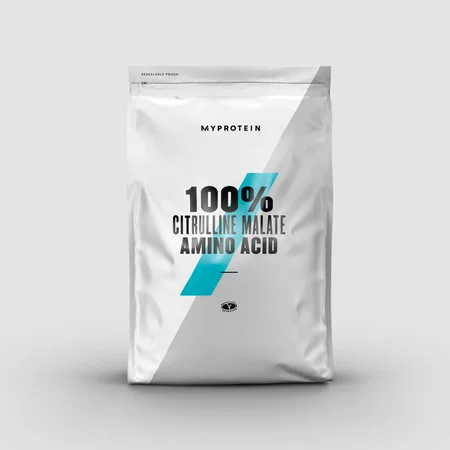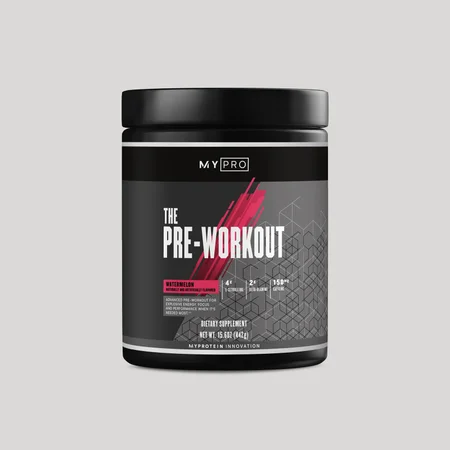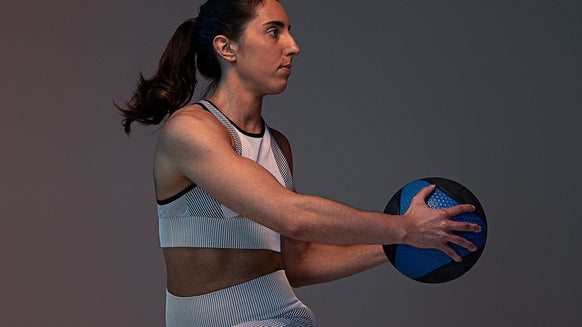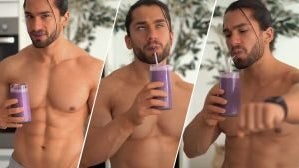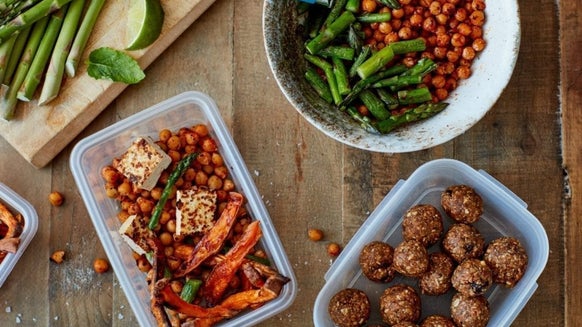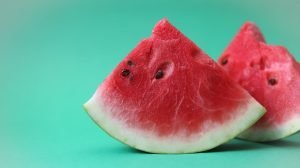
We’ve all been there. Those training sessions where you’re super motivated, your outfit is coordinated, your playlist can’t be beaten, and the gym isn’t packed for once. But then, your body gives in before your mind… When your muscles suddenly feel 10kg heavier, it can be very frustrating and disheartening.
What is Citrulline Malate?
Citrulline Malate (CM) is an amino acid compound which has gained attention due to its reported ability to delay the onset of fatigue during intense exercise. That's why you’ll often find CM in pre-workout supplements. Let’s take a closer look at its components…
Citrulline
Citrulline, sometimes referred to as l-citrulline, is a non-essential amino acid, meaning that it can be synthesised (produced) within the body. Once formed, citrulline is involved in various metabolic pathways — most notably, the urea cycle — and is a precursor for the amino acid Arginine.
Arginine has a role in the production of Nitric Oxide which works as a vasodilator to improve blood flow and oxygen delivery around the body.
Now, you may be thinking “why don’t we just supplement with arginine or NO?”. Well, citrulline has a longer half-life than arginine and NO, meaning that it circulates for longer once in our system, and is actually more effective at increasing levels of arginine than arginine supplements themselves.
Malate
Malate is an essential intermediate of the Tricarboxylic Acid (TCA) Cycle, which generates two-thirds of the body’s energy by utilizing fats and carbohydrates consumed through the diet. In the TCA cycle, malate is dehydrogenised (stripped of its hydrogen atoms), which, in the process, generates NADH2. This co-enzyme can then go on to produce adenosine triphosphate (ATP), which is the energy needed for muscle contraction.
Fundamentally, making sure your body has a sufficient amount of malate will keep the TCA cycle working smoothly and ensure your muscles have enough useable energy to keep you moving.
Citrulline Malate Benefits
It’s all well and good understanding the nitty gritty about what goes on in our cells, but the question is, does citrulline malate really work and will it work for me? Luckily, research has the answers.
Citrulline malate can delay muscle fatigue
During one cross-over study, resistance-trained men
Similar effects have been observed in women, with citrulline malate supplementation increasing the number of reps completed of various upper- and lower- body resistance exercises, compared to the placebo. Not only this, but the women in this study reported lower ratings of perceived exertion after consuming citrulline malate.
If dumbbells aren’t your style, citrulline malate can also improve calisthenic exercise performance, such as chin-ups and pull-ups, as well as boosting explosive power during a cycling Wingate performance test.
Improves oxygen delivery to muscles
Not only does citrulline malate have benefits for power related exercise, it has also shown benefits in aerobic exercise.
A few years ago, a research group put this to the test using a high-intensity cycling protocol, after participants had consumed either citrulline malate or placebo for the previous 7 days. In this case, citrulline malate increased the distance covered in a given time, improved capacity for oxidative metabolism, and lowered arterial blood pressure.
Citrulline Malate Dosage & Side Effects
FAQs
What is citrulline malate?
Citrulline malate is an amino acid which is involved in the production of Nitric Oxide, which improves blood flow.
How much citrulline malate should I take before a workout?
Studies have shown 6-8g to show optimal results, however dosages of 3g offer performance benefits
What are the benefits of citrulline malate?
Benefits of supplementing citrulline malate include delaying muscle fatigue and improving oxygen delivery to muscles.
Does citrulline malate have any side effects?
Citrulline malate does not have any known adverse side effects.
Take Home Message
All in all, citrulline malate looks like it has great potential as an ergogenic aid for both resistance and endurance performance. The citrulline component will help to boost nitric oxide production and shift unwanted ammonia, reducing muscular fatigue in the process. Meanwhile, malate will facilitate aerobic metabolism, making sure your muscles receive enough energy to handle your longer workouts.
READ THESE NEXT:

5 Maca Benefits | What Is Maca Root & What Does It Do?
Feeling tired? This supplement might be what you've been looking for....

3 Proven Benefits of Vitamin A | What It can do for You
Carrots to see in the dark? Vitamin A holds the answer....

Claire is a Registered Dietitian through the Academy of Nutrition and Dietetics and a board-certified Health and Wellness Coach through the International Consortium for Health and Wellness Coaching. She has a Bachelor of Science in Biology and a Master’s degree in Clinical Dietetics and Nutrition from the University of Pittsburgh.
Talking and writing about food and fitness is at the heart of Claire’s ethos as she loves to use her experience to help others meet their health and wellness goals.
Claire is also a certified indoor cycling instructor and loves the mental and physical boost she gets from regular runs and yoga classes. When she’s not keeping fit herself, she’s cheering on her hometown’s sports teams in Pittsburgh, or cooking for her family in the kitchen.
Find out more about Claire’s experience here.
- Böger, R.H. (2008). L-Arginine therapy in cardiovascular pathologies: beneficial or dangerous? Current Opinion in Clinical Nutrition and Metabolic Care, 11(1), 55-61. doi: 10.1097/MCO.0b013e3282f2b0c3
- Dinenno, F.A. (2016). Skeletal muscle vasodilation during systemic hypoxia in humans. Journal of Applied Physiology, 120(2), 216-225. doi:10.1152/japplphysiol.00256.2015
- Botchlett, R., Lawler, J.M., & Wu, G. (2019). l-Arginine and l-Citrulline in Sports Nutrition and Health. Nutrition and Enhanced Sports Performance, chapter 55, 645-652. doi:10.1016/B978-0-12-813922-6.00055-2
- Nybo, L., Dalsgaard, M.K., Steensberg, A., et al. (2005). Cerebral ammonia uptake and accumulation during prolonged exercise in humans. The Journal of Physiology, 563(1), 285-290. doi:10.1113/jphysiol.2004.075838
- Akram, M. (2014). Citric Acid Cycle and Role of its Intermediates in Metabolism. Cell Biochemistry and Biophysics, 68(3), 475-478. doi:10.1007/s12013-013-9750-1
- Wax, B., Kavazis, A.N., Weldon, K., Sperlak, J. (2015). Effects of Supplemental Citrulline Malate Ingestion During Repeated Bouts of Lower-Body Exercise in Advanced Weightlifters. The Journal of Strength & Conditioning Research, 29(3), 786-792. doi: 10.1519/JSC.0000000000000670
- Glenn, J.M., Gray, M., Wethington, L.N. et al. (2017). Acute citrulline malate supplementation improves upper- and lower-body submaximal weightlifting exercise performance in resistance-trained females. European Journal of Nutrition, 56(2), 775-784. doi:10.1007/s00394-015-1124-6
- Wax, B., Kavazis, A.N. & Luckett, W. (2015). Effects of Supplemental Citrulline-Malate Ingestion on Blood Lactate, Cardiovascular Dynamics, and Resistance Exercise Performance in Trained Males. Journal of Dietary Supplements, 13(3), 269-282. doi:10.3109/19390211.2015.1008615
- Glenn, J.M., Gray, M., Jensen, A., Stone, M.S., & Vincenzo, J.L. (2016). Acute citrulline-malate supplementation improves maximal strength and anaerobic power in female, masters athletes tennis players. European Journal of Sport Science, 16(8), 1095-1103. doi:10.1080/17461391.2016.1158321
- Trexler, E.T., Keith, D.S., Schwartz, T.A., et al. (2019). Effects of Citrulline Malate and Beetroot Juice Supplementation on Blood Flow, Energy Metabolism, and Performance During Maximum Effort Leg Extension Exercise. The Journal of Strength & Conditioning Research, 33(9), 2321-2329. doi:10.1519/JSC.0000000000003286
- Bailey, S.J., Blackwell, J.R., Lord, T., et al. (2015). l-Citrulline supplementation improves O2 uptake kinetics and high-intensity exercise performance in humans. Journal of Applied Physiology, 119(4), 385-395. doi:10.1152/japplphysiol.00192.2014
